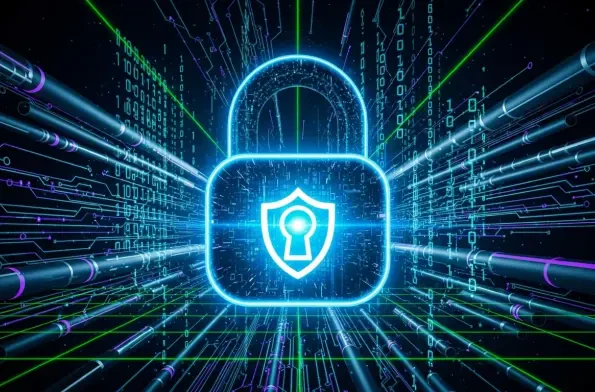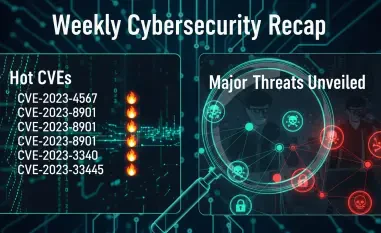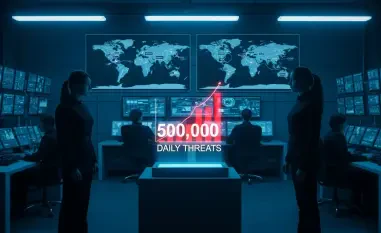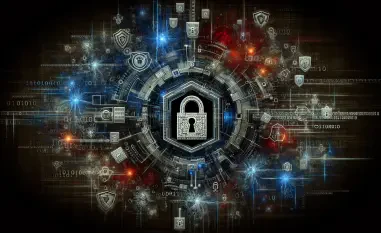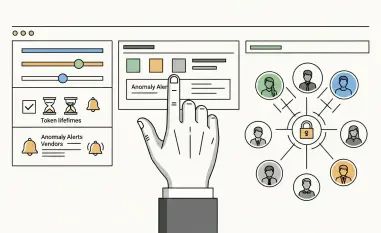Understanding the Cybersecurity Landscape
Imagine a major financial institution waking up to find its entire customer database held hostage by ransomware, with millions in potential losses and irreparable damage to trust, a scenario that is not a distant possibility but a daily risk in today’s digital age where cyber threats loom large across every industry. Cybersecurity has become a cornerstone of organizational survival, protecting critical digital assets from increasingly sophisticated attacks that can cripple operations overnight.
The scope of these threats is vast, encompassing ransomware, malware, phishing schemes, and state-sponsored attacks that target entities of all sizes, from small startups to global corporations. No sector is immune, as evidenced by recent high-profile breaches in healthcare, retail, and government systems, which have led to financial losses, data theft, and compromised public safety. The impact often extends beyond immediate costs, eroding customer confidence and triggering regulatory penalties that can haunt organizations for years.
Key players in this arena include security vendors offering solutions, businesses striving to safeguard their operations, and potential independent bodies that could oversee impartial assessments. Yet, a glaring gap persists: the absence of universal standards or regulations for cybersecurity validation. Without a cohesive framework, organizations struggle to gauge the effectiveness of their defenses, leaving them vulnerable to threats they may not even recognize until it’s too late.
Current Trends and Challenges in Cybersecurity
Emerging Threats and Reactive Mindsets
A troubling trend in the cybersecurity domain is the complacency exhibited by organizations that have yet to experience a direct attack. Many assume their current measures are sufficient, often underinvesting in robust defenses due to a lack of perceived urgency. This mindset creates a dangerous blind spot, as unseen vulnerabilities can be exploited at any moment by attackers who are constantly evolving their tactics.
The reactive nature of cybersecurity improvements exacerbates this issue, with many entities only bolstering their systems after a breach has occurred. Such post-incident responses, while necessary, often come at a high cost, both financially and reputationally, as the damage is already done. This pattern highlights a critical need for a shift toward proactive strategies that anticipate and mitigate risks before they materialize.
Cyber threats themselves are not static; they adapt and grow more complex with each passing day, leveraging advanced technologies like artificial intelligence to bypass traditional defenses. Staying ahead of these adversaries requires a forward-thinking approach, where organizations continuously update their systems and train their teams to recognize emerging dangers. Without this vigilance, the gap between threat sophistication and defense readiness will only widen.
Lack of Objective Data and Metrics
Another significant challenge lies in the scarcity of reliable, independent data to evaluate cybersecurity readiness. Many organizations remain unaware of their specific vulnerabilities, operating under assumptions rather than evidence-based insights. This lack of clarity prevents informed decision-making, leaving critical systems exposed to risks that could have been addressed with proper assessment.
Current evaluations often stem from security vendors whose assessments may be influenced by the desire to sell their products, raising questions about their objectivity. Such vendor-driven metrics lack the impartiality needed to inspire trust, as potential conflicts of interest undermine their credibility. Organizations, therefore, find themselves navigating a landscape where true performance indicators are hard to come by.
The absence of standardized benchmarks further compounds this issue, as there is no universally accepted method to measure the effectiveness of cybersecurity defenses. Establishing such metrics is essential to provide a clear picture of an organization’s security posture, enabling targeted improvements. Until this gap is addressed, the industry will continue to grapple with uncertainty and inconsistent protection levels.
Barriers to Effective Cybersecurity Validation
One of the primary obstacles to robust cybersecurity validation is the lack of impartial entities capable of conducting trustworthy assessments. Without neutral third parties to oversee evaluations, organizations are left relying on potentially biased sources, which can skew results and obscure real weaknesses. This trust deficit hinders the adoption of meaningful security enhancements.
Internal resistance within organizations also poses a significant barrier, as stakeholders often hesitate to allocate resources to cybersecurity without tangible evidence of immediate threats. Budget constraints and competing priorities frequently overshadow the need for preventive measures, even as the potential cost of a breach far exceeds the investment in defense. Overcoming this reluctance requires a cultural shift toward recognizing the long-term value of security.
Creating a one-size-fits-all standard presents its own complexities, given the diverse threat landscapes across industries like finance, healthcare, and manufacturing. Each sector faces unique challenges, necessitating tailored approaches rather than a generic framework. Potential strategies to address this include developing sector-specific guidelines and fostering collaboration among industry peers to share best practices, ensuring validation efforts are both relevant and effective.
The Case for a Regulatory and Validation Framework
At present, significant regulatory gaps exist in the cybersecurity realm, particularly the absence of a universally accepted validation standard to guide organizations. While some regions have introduced data protection laws, these often lack the specificity needed to ensure consistent security testing and assessment. This void leaves many entities without a clear path to achieving or verifying robust protection.
Industry collaboration could play a pivotal role in filling this gap through the establishment of a body akin to STAC, dedicated to developing sector-specific cybersecurity tests and ratings. Such an organization, potentially funded by businesses themselves, could create benchmarks tailored to the unique needs of different industries, providing a reliable measure of defense capabilities. This approach would foster accountability and drive improvements across the board.
Incentives for compliance could further reinforce the adoption of such a framework, with industry partners mandating minimum validation levels for digital collaboration. Similarly, cybersecurity insurance providers might require validated security standards as a prerequisite for coverage, pushing organizations to prioritize compliance. These mechanisms would collectively elevate security practices, strengthening the resilience of interconnected networks and supply chains.
Future Outlook: Building a Secure Digital Ecosystem
Looking ahead, the development of a cybersecurity validation standard stands as a potential catalyst for shifting toward proactive defense strategies. By providing a clear, objective measure of security readiness, such a framework would empower organizations to address vulnerabilities before they are exploited. This preventive mindset is crucial in an era where cyber threats grow more intricate by the day.
Emerging technologies, such as automated testing tools and machine learning-driven vulnerability assessments, offer promising support for standardized validation efforts. These innovations could streamline the process of identifying weaknesses, making it more efficient and accessible for organizations of varying sizes. Integrating these tools into a broader framework would enhance the accuracy and scalability of security evaluations.
Global cooperation remains equally vital, as cyber risks often transcend borders, particularly in interconnected supply chains and digital networks. Industry-specific frameworks, developed through international dialogue, could address these shared challenges, ensuring that validation standards account for cross-border dependencies. This collaborative spirit will be essential to building a truly secure digital ecosystem.
Conclusion: A Call to Action for Standardization
Reflecting on the discussions held, it becomes evident that the critical need for a cybersecurity validation standard has been overlooked for too long, leaving countless organizations exposed to evolving threats. The analysis revealed a pervasive reliance on reactive measures that fail to prevent breaches, underscoring the urgency of a preventive approach.
Moving forward, actionable steps emerge as a priority, with the establishment of an independent, industry-funded body standing out as a viable solution to deliver objective, sector-specific assessments. This initiative promises to bridge trust gaps and provide tailored benchmarks that organizations can rely on to fortify their defenses.
Beyond this, fostering global partnerships and leveraging cutting-edge technologies to support validation efforts surface as essential considerations for the future. These strategies aim to address interconnected risks and ensure that cybersecurity keeps pace with an ever-changing threat landscape, paving the way for a safer digital environment for all stakeholders.
